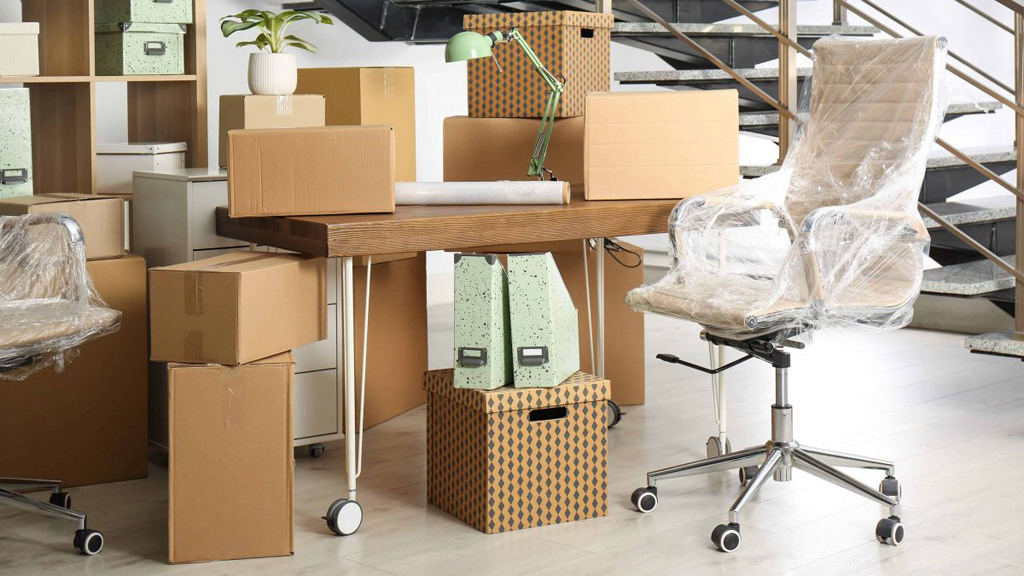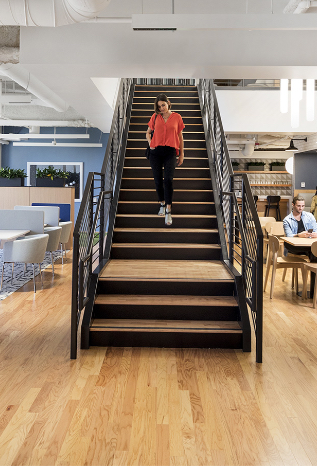When you’re looking for an office space, it can be hard to wrap your head around how big your office needs to be. Don’t worry – we’ve got you covered, answering all of your key questions like “how much office space do I need per person?”
How much office space do I need per employee?
The Health and Safety Executive states that “every room where persons work shall have sufficient floor area, height and unoccupied space for purposes of health, safety and welfare.” Its Approved Code of Practice and Guidance goes on to state that: “the total volume of the room, when empty, divided by the number of people normally working in it, should be at least 11 cubic metres.”
That works out to be just over 50 square feet per person, which is the generally accepted rule today for desk space. However, most offices also allow an additional 50 square feet per person for communal areas like the kitchen, meeting rooms and breakout zones.
And, as the guidance states, rooms may need to be bigger or have fewer people working in them depending on numerous other factors such as the ceiling height, layout of the room, furniture in the office, and the nature of the work being carried out.
It’s safe to say that 100 square feet per person allows for a comfortable working environment with plenty of space for each person. Many offices, especially in central London, work on the basis of 70 or 80 square feet per person, meaning businesses can save on office rental costs which can be as high as £110 per square foot in the West End.
These businesses may need to opt for space-saving solutions like standing desks and benches. Alternatively, if they have a flexible working policy, they could choose a smaller office space or even a coworking space, in the knowledge that not all members of staff will be in the office at the same time.
Outside of London, where office space tends to be cheaper, businesses may opt for larger office spaces with more than 100 square feet per employee. There’s really no definitive answer to how much office space is needed per employee – and there are no rules and regulations around it either, so the average office building size will vary depending on the location, type of company and the work being done.
What about communal areas?
The 100 square foot calculation includes the need for communal areas within the office space – in fact, 50 square feet is set aside for this. As a general rule, you should consider factoring in the following spaces when calculating how big your office needs to be:
- 100 square feet for a kitchen area
- 100 square feet for a small meeting room, holding 2 to 4 people
- 150 square feet for a large meeting room, holding 4 to 8 people
- 220 square feet for a boardroom, holding 15 to 20 people
- 300 square feet for a training or conference room, holding 20 to 30 people
- 40 square feet for a small server room with 1 server rack
- 120 square feet for a large server room with 4 server racks
Other things to consider
When you’re looking at office space, there are a few other factors besides size that you’ll want to take into account, which we’ll look at below.
Office layout
Take a look at how the office is set out before making your decision based on square footage alone. Even if an office space is deemed to be 1000 square feet, for example, there may be 200 square feet that are unusable as desk space because the office has an awkward layout, there is low natural light in certain parts of the room, or the ceiling may be too low to accommodate desk space.
Will you have an open-plan office?
Allowing for 100 square foot per person works well in open-plan offices, where everyone sits close together. However, if your work requires that your staff need more privacy for their roles and you’ll be using cubicles or even small offices for each person, then you’ll need more than 100 square foot per person. It’s worth doubling that figure if you’ll need more isolated work spaces for your staff.
Will you be hiring more staff?
With company expansion comes the need for more space – which is, of course, an additional cost that you must factor into your budget. You should consider whether you want to start with an office size that’s surplus to your needs, or if you want to relocate to a bigger office when you hire more staff. Choosing to rent serviced office space from Easy Offices makes it easy to scale your office space up or down to suit your needs, without being locked into expensive long-term contracts with no flexibility.
As you have hopefully gathered, office size per employee isn’t an exact science. Give us a call here at Easy Offices and we can help you to find an office space that suits your needs.

